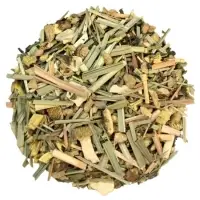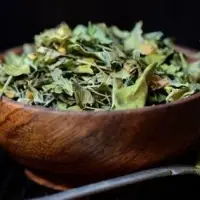

KATEKIN Jasmine Tea comes in Big Size Tea Bags, each bag contains 10 gram of Jasmine Tea, this product is suitable for HORECA (Hotel, Restaurant, Cafe). KATEKIN Jasmine Tea uses International Grade Tea Filter Paper. KATEKIN Jasmine Tea Big Size Tea Bag offer practicality for Hotels, Restaurants, and Cafes by only needing to brew 1 Big Size Tea Bag for up to 2 L of Jasmine Tea, eliminating the need to brew multiple personal size tea bags at once to make big batches. The tea leaf products we sell are produced from a clean production process so that quality dry tea leaf products are produced. We accept Maklon/Toll Manufacturing where we produce requested products, so the buyers or brand owners can sell the final outcome of the tea. Price listed is for each pack consisting 36 tea bags @ 10 gram of Jasmine Tea.

KATEKIN Green Tea comes in Personal Size Tea Bags, packaged in a bundle consisting 125 tea bags packed in individual sachets, this product is suitable for HORECA (Hotel, Restaurant, Cafe). KATEKIN Green Tea uses International Grade Tea Filter Paper. KATEKIN Green Tea can be enjoyed for daily consumption, and versatile for combinations with sweetener, fruits, etc. Each tea bag contains 2 gram of Green Tea and packed individually in a sachet. The tea leaf products we sell are produced from a clean production process so that quality dry tea leaf products are produced. We accept Maklon/Toll Manufacturing where we produce requested products, so the buyers or brand owners can sell the final outcome of the tea. Price listed is for each pack consisting 125 individual sachets.
KATEKIN Black Tea comes in Personal Size Tea Bags, packaged in a bundle consisting 125 tea bags packed in individual sachets, this product is suitable for HORECA (Hotel, Restaurant, Cafe). KATEKIN Black Tea uses International Grade Tea Filter Paper. KATEKIN Black Tea can be enjoyed for daily consumption, and versatile for combinations with sweetener, fruits, etc. Each tea bag contains 2 gram of Black Tea and packed individually in a sachet. The tea leaf products we sell are produced from a clean production process so that quality dry tea leaf products are produced. We accept Maklon/Toll Manufacturing where we produce requested products, so the buyers or brand owners can sell the final outcome of the tea. Price listed is for each pack consisting 125 individual sachets.
KATEKIN Black Tea comes in Big Size Tea Bags, each bag contains 15 gram of Black Tea, this product is suitable for HORECA (Hotel, Restaurant, Cafe). KATEKIN Black Tea uses International Grade Tea Filter Paper. KATEKIN Black Tea Big Size Tea Bag offer practicality for Hotels, Restaurants, and Cafes by only needing to brew 1 Big Size Tea Bag for up to 3 L of Black Tea, eliminating the need to brew multiple personal size tea bags at once to make big batches. The tea leaf products we sell are produced from a clean production process so that quality dry tea leaf products are produced. We accept Maklon/Toll Manufacturing where we produce requested products, so the buyers or brand owners can sell the final outcome of the tea. Price listed is for each pack consisting 36 tea bags @ 15 gram of Black Tea.
KATEKIN Green Tea comes in Big Size Tea Bags, each bag contains 10 gram of Green Tea, this product is suitable for HORECA (Hotel, Restaurant, Cafe). KATEKIN Green Tea uses International Grade Tea Filter Paper. KATEKIN Green Tea Big Size Tea Bag offer practicality for Hotels, Restaurants, and Cafes by only needing to brew 1 Big Size Tea Bag for up to 2 L of Green Tea, eliminating the need to brew multiple personal size tea bags at once to make big batches. The tea leaf products we sell are produced from a clean production process so that quality dry tea leaf products are produced. We accept Maklon/Toll Manufacturing where we produce requested products, so the buyers or brand owners can sell the final outcome of the tea. Price listed is for each pack consisting 36 tea bags @ 10 gram of Green Tea.
Common chicory, Cichorium intybus, is a somewhat woody, perennial herbaceous plant of the dandelion family Asteraceae, usually with bright blue flowers, rarely white or pink. Many varieties are cultivated for salad leaves, chicons (blanched buds), or roots (var. sativum), which are baked, ground, and used as a coffee substitute and food additive. In the 21st century, inulin, an extract from chicory root, has been used in food manufacturing as a sweetener and source of dietary fiber
Jasmine can be either deciduous (leaves falling in autumn) or evergreen (green all year round), and can be erect, spreading, or climbing shrubs and vines. Their leaves are borne in opposing or alternating arrangement and can be of simple, trifoliate, or pinnate formation. The flowers are typically around 2.5 cm (0.98 in) in diameter. They are white or yellow in color, although in rare instances they can be slightly reddish. The flowers are borne in cymose clusters with a minimum of three flowers, though they can also be solitary on the ends of branchlets. Each flower has about four to nine petals, two locules, and one to four ovules. They have two stamens with very short filaments. The bracts are linear or ovate.
The plant is primarily cultivated for the production of bast fiber from the stem. The fiber may be used as a substitute for jute in making burlap. Hibiscus, specifical roselle, has been used in folk medicine as a diuretic and mild laxative. The red calyces of the plant are increasingly exported to the United States and Europe, particularly Germany, where they are used as food colorings. It can be found in markets (as flowers or syrup) in places, such as France, where there are Senegalese immigrant communities. The green leaves are used like a spicy version of spinach. They give flavor to the Senegalese fish and rice dish thieboudienne. Proper records are not kept, but the Senegalese government estimates national production and consumption at 700 t (770 short tons) per year. In Burma, their green leaves are the main ingredient in chin baung kyaw curry.
Citronella grass (Cymbopogon nardus and Cymbopogon winterianus) grow to about 2 m (6.6 ft) and have magenta-colored base stems. These species are used for the production of citronella oil, which is used in soaps, as an insect repellent (especially mosquitoes) in insect sprays and candles, and in aromatherapy. The principal chemical constituents of citronella, geraniol and citronellol, are antiseptics, hence their use in household disinfectants and soaps. Besides oil production, citronella grass is also used for culinary purposes, as a flavoring. East Indian lemongrass (Cymbopogon flexuosus), also called Cochin grass or Malabar grass, is native to Cambodia, Vietnam, Laos, India, Sri Lanka, Burma, and Thailand, while West Indian lemongrass (Cymbopogon citratus) is native to maritime Southeast Asia. While both can be used interchangeably, C. citratus is more suitable for cooking. In India, C. citratus is used both as a medical herb and in perfumes. C. citratus is consumed as a tea for anxiety in Brazilian folk medicine, but a study in humans found no effect. The tea caused a recurrence of contact dermatitis in one case.
M. oleifera is a fast-growing, deciduous tree that can reach a height of 10 - 12 m (32 - 40 ft) and trunk diameter of 45 cm (1.5 ft). The bark has a whitish-grey colour and is surrounded by thick cork. Young shoots have purplish or greenish-white, hairy bark. The tree has an open crown of drooping, fragile branches and the leaves build up a feathery foliage of tripinnate leaves. The flowers are fragrant and hermaphroditic, surrounded by five unequal, thinly veined, yellowish-white petals. The flowers are about 1.0 - 1.5 cm (1/2) long and 2.0 cm (3/4) broad. They grow on slender, hairy stalks in spreading or drooping flower clusters which have a length of 10 - 25 cm. Flowering begins within the first six months after planting. In seasonally cool regions, flowering only occurs once a year between April and June. In more constant seasonal temperatures and with constant rainfall, flowering can happen twice or even all year-round. The fruit is a hanging, three-sided brown capsule of 20â??45 cm size which holds dark brown, globular seeds with a diameter around 1 cm. The seeds have three whitish papery wings and are dispersed by wind and water. In cultivation, it is often cut back annually to 1 - 2 m (3 - 6 ft) and allowed to regrow so the pods and leaves remain within arm's reach.
In Laos, (it known as pak i tou, lemon basil is used extensively in soups, stews, curries and stir-fried dishes as it is the most commonly used type of basil in Laos. Many Lao stews require the use of lemon basil as no other basil varieties are acceptable as substitutes. The most popular Lao stew called or lam uses lemon basil as a key ingredient. Lemon basil is the only basil used much in Indonesian cuisine, where it is called kemangi. It is often eaten raw with salad or lalap (raw vegetables) and accompanied by sambal. Lemon basil is often used to season certain Indonesian dishes, such as curries, soup, stew and steamed or grilled dishes. In Thailand, Lemon basil, called maenglak (Thai, is one of several types of basil used in Thai cuisine. The leaves are used in certain Thai curries and it is also indispensable for the noodle dish khanom chin nam ya. In the Philippines,where it is called sangig, particularly in Cebu and parts of Mindanao, Lemon basil is used to add flavor to Law-uy, which is an assortment of local greens in a vegetable-based soup. The seeds resemble frog's eggs after they have been soaked in water and are used in sweet desserts. It is also used in North East part of India state Manipur. In Manipur, it is used in curry like pumpkin, used in singju (a form of salad), and in red or green chilli pickles. The Garo, Khasi and Jaintia tribe of Meghalaya also use it in their cuisine. The Garos call it Panet (pronounced Phanet). They use it to prepare cold sauce (Ind. Chutney) with added ingredients like fermented fish, chilly, onions sometimes roasted tomatoes.
Ocimum tenuiflorum (synonym Ocimum sanctum), commonly known as holy basil or tulsi, is an aromatic perennial plant in the family Lamiaceae. It is native to the Indian subcontinent and widespread as a cultivated plant throughout the Southeast Asian tropics. Tulsi is cultivated for religious and traditional medicine purposes, and also for its essential oil. It is widely used as a herbal tea, commonly used in Ayurveda, and has a place within the Vaishnava tradition of Hinduism, in which devotees perform worship involving holy basil plants or leave
Peppermint (Mentha piperita, also known as Mentha balsamea Wild) is a hybrid mint, a cross between water mint and spearmint. Indigenous to Europe and the Middle East, the plant is now widely spread and cultivated in many regions of the world. It is occasionally found in the wild with its parent species.










